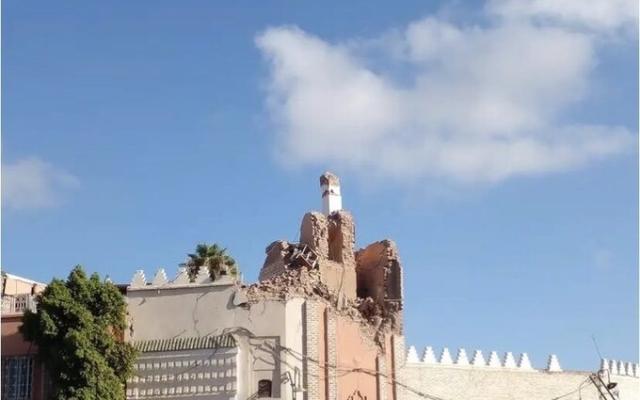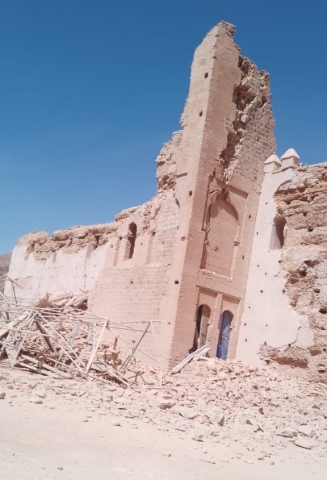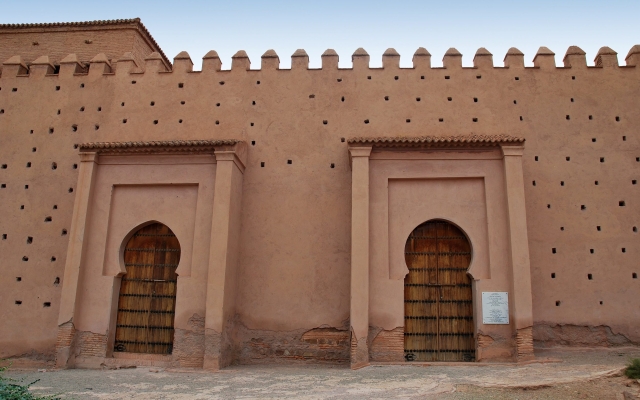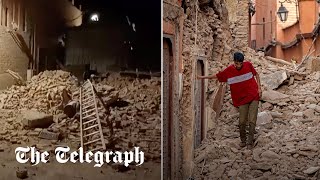 The destroyed minaret of a Moroccan mosque after Friday's earthquake
The destroyed minaret of a Moroccan mosque after Friday's earthquake
The Tinmel Mosque stands proudly in the High Atlas Mountains of Morocco, near the epicenter of Friday's earthquake, from the beginning 12th century.
As news of the disaster spread on Saturday, images of the destruction caused to Morocco's historical sites also circulated on social media.< /p>
Most striking was the extensive damage caused Tinmelou, one of two mosques open to non-Muslim visitors in Morocco.
Known as a shining example of Almohad architectural heritage, it was built in 1156 by the first caliph of the Almohad empire, Abd al-Mu'min.
< p>The village of Tinmel was the cradle of the Berber Almohad Empire. The mosque was built in honor of Mehdi ibn Tumert, who used Tinmel as his base to conquer Marrakech in 1147.
 Damage from the Tinmel Mosque earthquake in Marrakech
Damage from the Tinmel Mosque earthquake in Marrakech  The Tinmel Mosque, built in 1156, pictured before the disaster. Photo: MOHAMMED SERKHIR/iStockphoto
The Tinmel Mosque, built in 1156, pictured before the disaster. Photo: MOHAMMED SERKHIR/iStockphoto
For the past 800 years, the mosque, which is no longer active, has towered over the Ouirgan Valley from a height of 1,230 meters. -meter mountain. Now its walls and building lie in ruins.
Sixty-five miles from the snow-capped Atlas Mountains, in the tourist hotspot of Marrakech, there are fears that some of the city's world-famous treasures have been destroyed. died in the earthquake.
Images emerged of debris and debris from collapsed buildings scattered throughout the narrow streets of the historic old town.
The old city is known as the Medina and became a UNESCO World Heritage Site in 1985. It boasts buildings dating from this date. back to its founding in the 11th century by the Almoravid dynasty, which emerged from the desert to conquer Morocco.
Before the earthquake, tourism in Morocco had recovered strongly, and few cities captured the imagination of tourists like the souks of Marrakech and its surrounding red walls .
The walls are built from the distinctive red earth of the surrounding plains, so the ancient metropolis became known as the «Red City.»
Moroccans posted videos showing damage to parts of the historic ramparts and some of them. collapsed walls.

Jemaa el Fna, Africa's busiest square, is also located in the old town. Many people rushed to the triangular square, built in the 14th century, as buildings collapsed and swayed during the earthquake.
Popular with locals and tourists, it is usually filled with snake charmers and market stalls and goes unnoticed. the medieval Koutoubia Mosque.
The famous mosque, which is closely guarded due to its famous status, was damaged, but the extent is not clear at this stage.
It was feared that the 226-foot The minaret known as the «roof of Marrakesh» may collapse after footage emerged of it covered in dust following a magnitude 6.8 earthquake.
Still an active place of worship, it is closed to non-Muslims and has recently been equipped with solar panels and energy-efficient lighting.
Earthquake in Morocco
Social media footage shows part of the minaret of another mosque in Jemaa el-Fna Square collapsed.
Marrakech, where many historic buildings were not built to withstand earthquakes, is due to host the annual meetings of the International Monetary Fund and the World Bank in early October.
Tourism in Morocco, a vital part of its economy, has rebounded strongly since the end of the pandemic. In the first six months of 2023, tourist numbers rose 92 percent to an estimated 6.5 million.
People in the capital Rabat and the city of Casablanca also fled their homes after the earthquake forced many to sleep outdoors in Marrakesh. amid fears of further building collapses.
The tremors were felt as far away as the three-hour drive from Marrakech in Essaouira, where windy beaches attract kite surfers.























































Свежие комментарии